Abstract
The isolation is described of pure cultures of three non-methane-utilizing methylotrophic bacteria which, together with the previously described Bacillus PM6, have a very limited range of growth substrates; these organisms are designated "restricted facultative' methylotrophs. Two of these isolates, W6A and W3A1, grow only on glucose out of 50 non-C1 compounds tested, whereas the third isolate S2A1 and Bacillus PM6 grow on betaine, glucose, gluconate, alanine, glutamate, citrate and nutrient agar, but not on any of a further 56 non-C1 compounds. Crude sonic extracts of trimethylamine-grown and glucose-grown W6A and W3A1 isolates, and of trimethylamine-grown C2A1 (an obligate methylotroph) contain (i) no detectable 2-oxogltarate dehydrogenase activity, (ii) very low or zero specific activities of succinate dehydrogenase and succinyl-CoA synthetase and (iii) NAD+-dependent isocitrate dehydrogenase activity. Extracts of trimethylamine-grown PM6 and S2A1 methylotrophs have (i) very low 2-oxoglutarate dehydrogenase specific activities, (ii) comparatively high specific activities of succinate dehydrogenase, malate dehydrogenase and succinyl-CoA synthetase and (iii) NADP+-dependent isocitrate dehydrogenase activity but no NAD+-dependent isocitrate dehydrogenase activity. The activities of most of these enzymes are increased during growth on glucose, alanine, glutamate or citrate, but only very low 2-oxoglutarate dehydrogenase activities are present under all growth conditions. The restricted facultative methylotrophs grow on certain non-C1 compounds in the absence of 2-oxoglutarate dehydrogenase and, in some cases, of other enzymes of the tricarboxylic acid cycle; these lesions cannot therefore be the sole cause of obligate methylotrophy.
Full text
PDF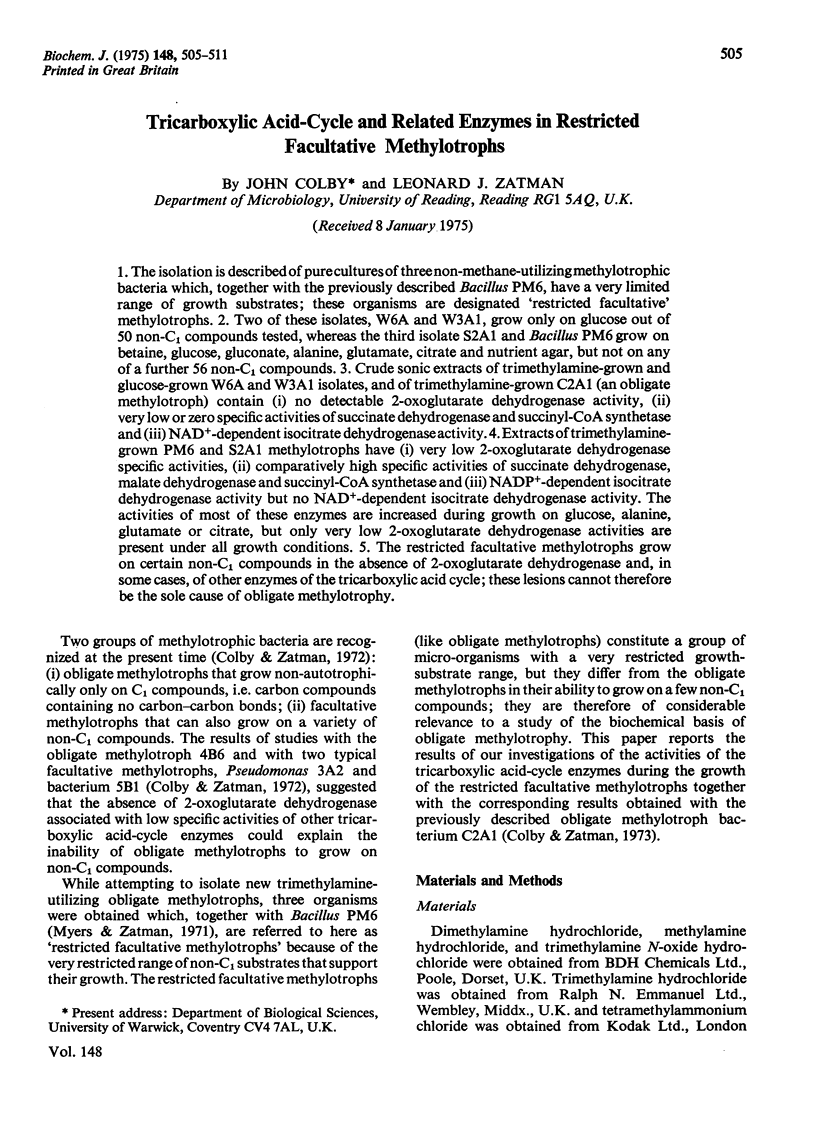
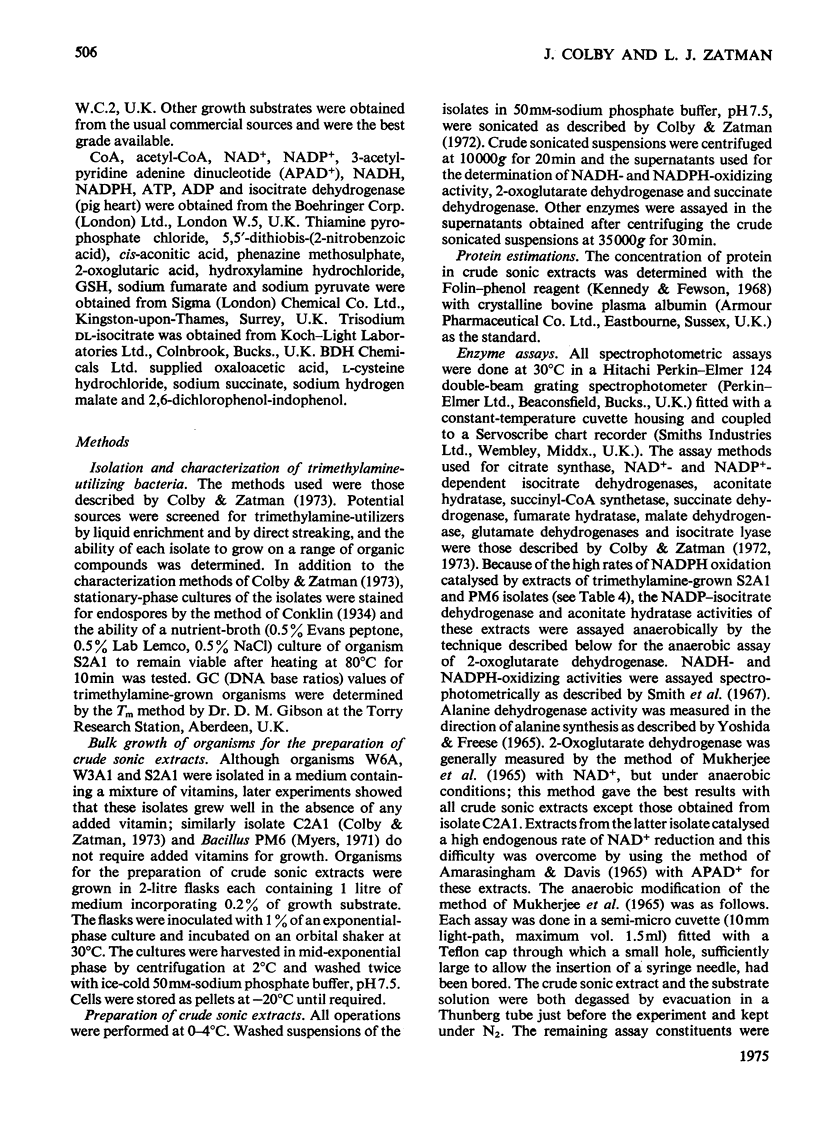
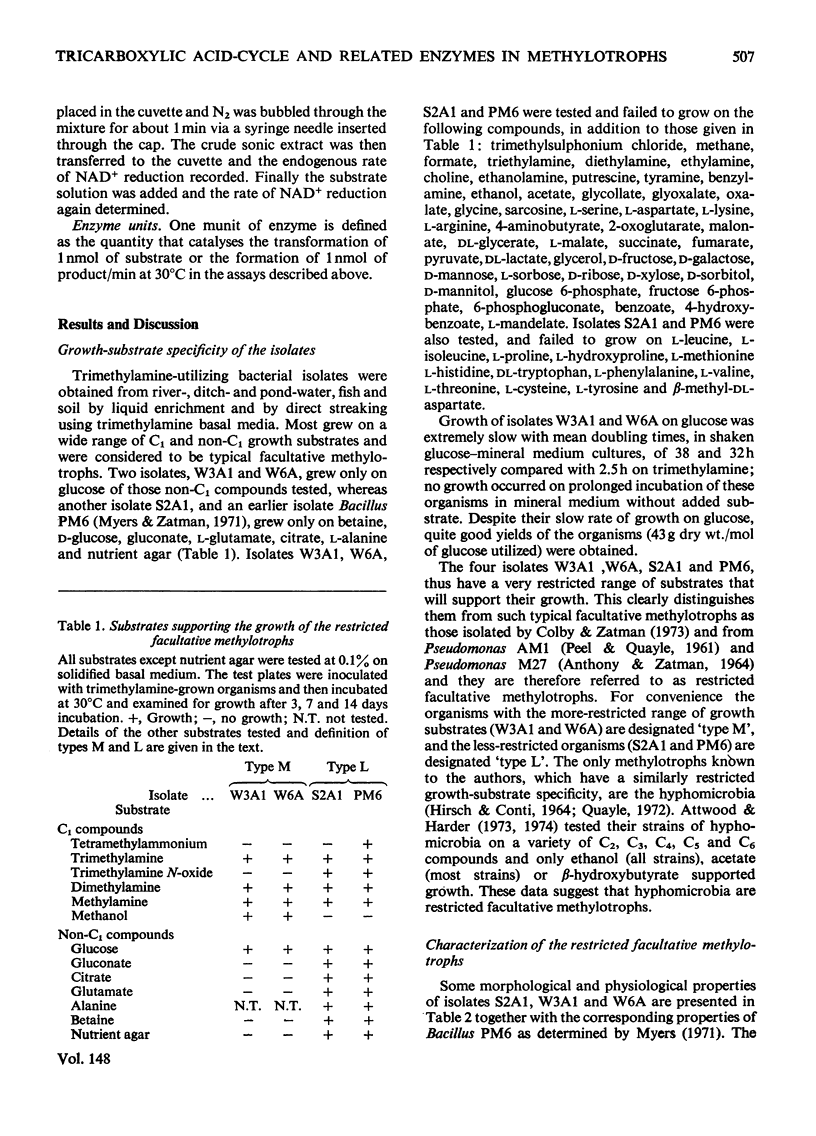
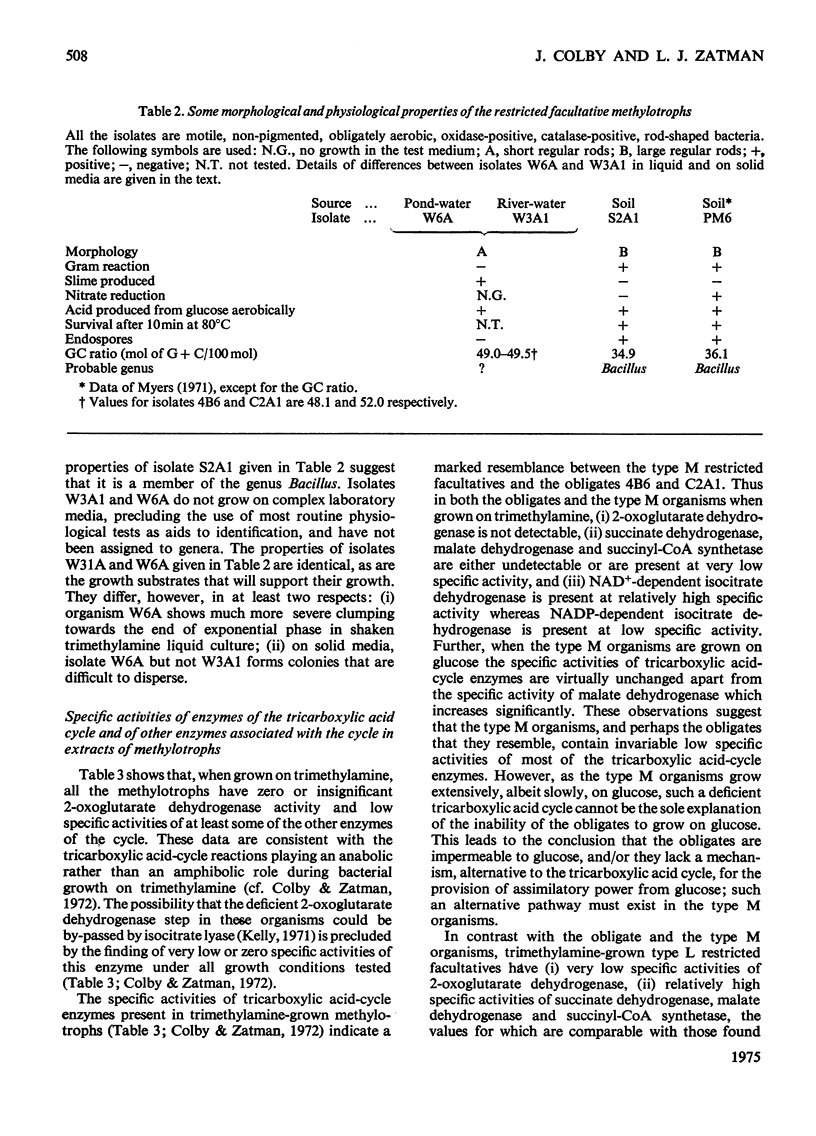
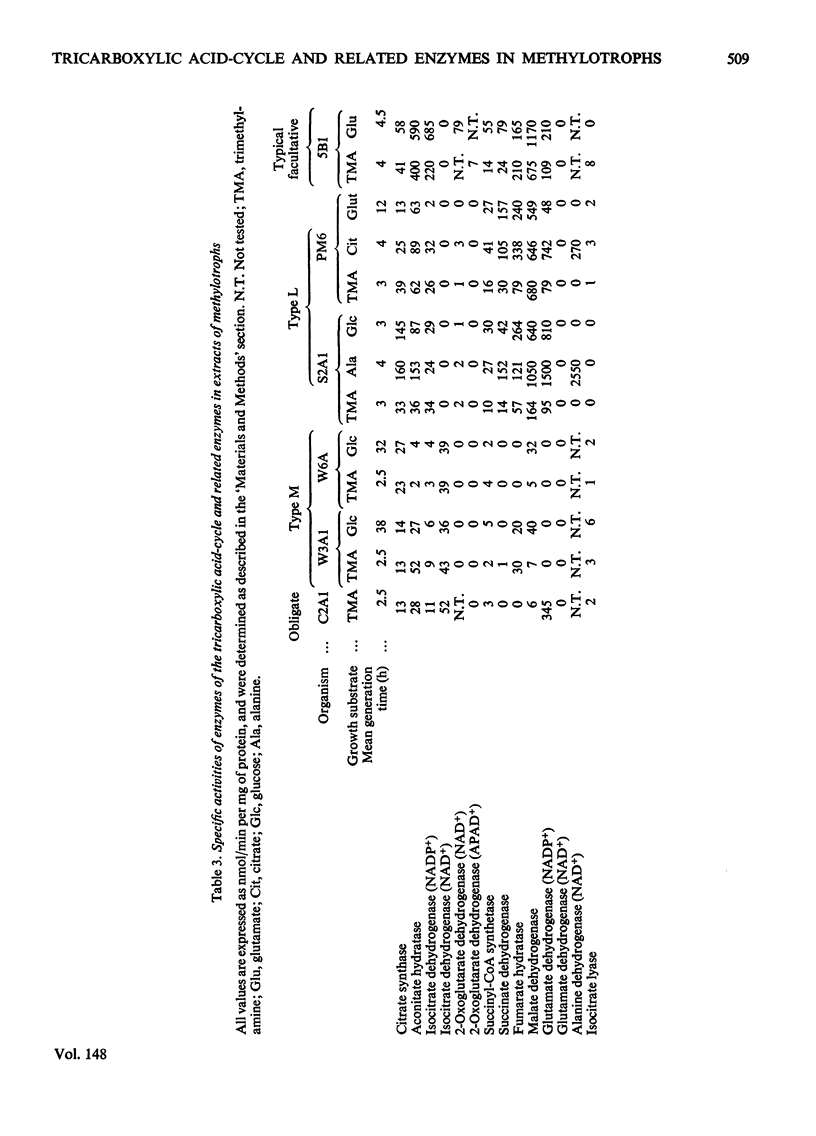
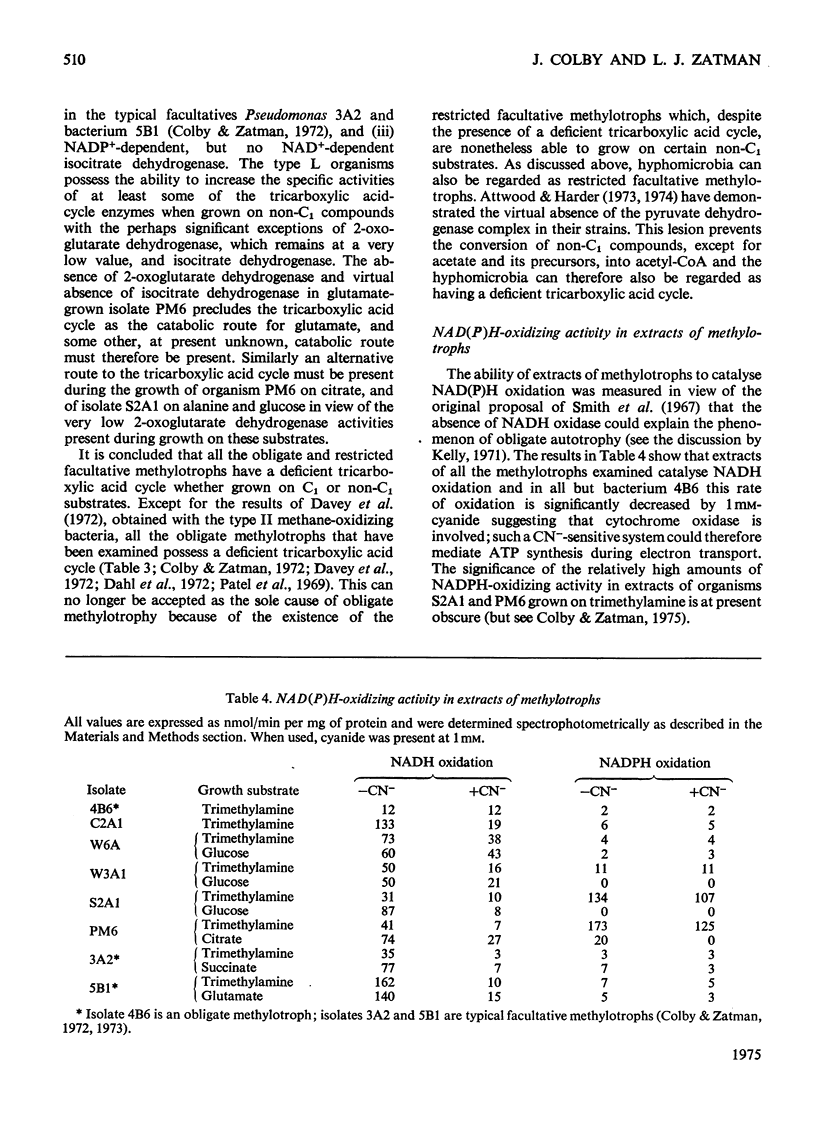
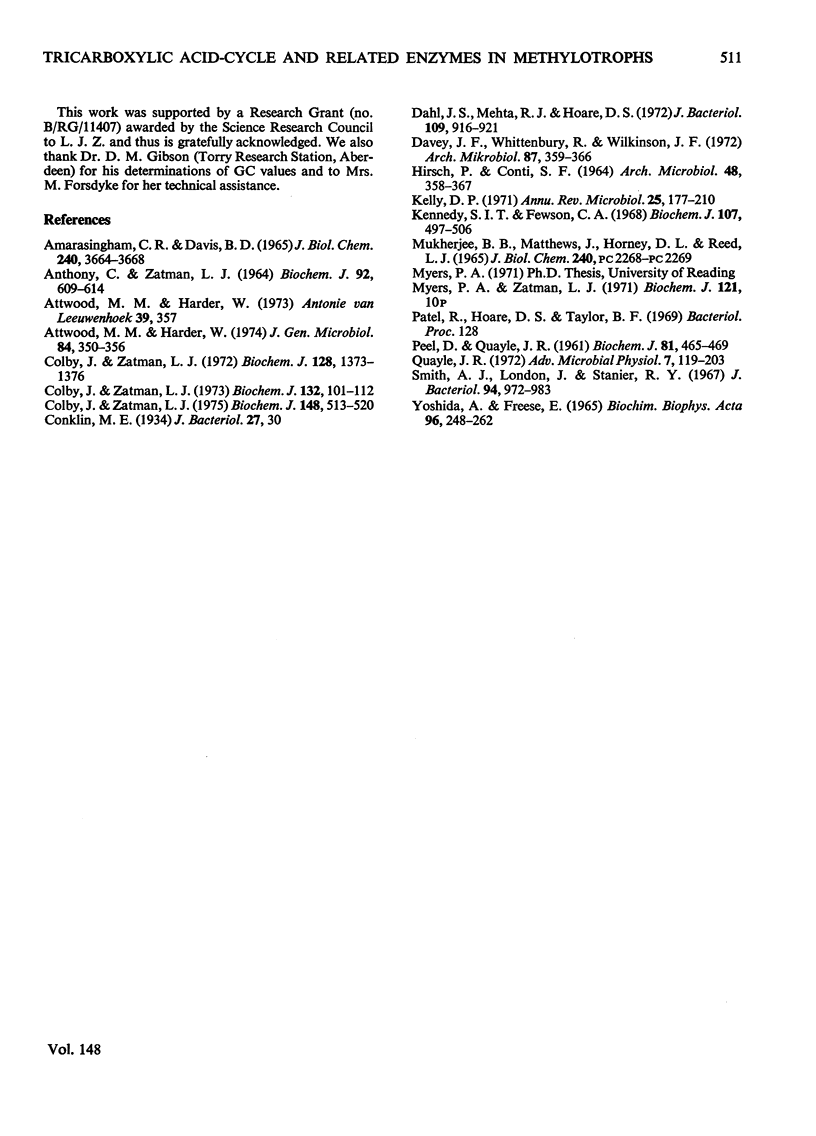
Selected References
These references are in PubMed. This may not be the complete list of references from this article.
- Amarasingham C. R., Davis B. D. Regulation of alpha-ketoglutarate dehydrogenase formation in Escherichia coli. J Biol Chem. 1965 Sep;240(9):3664–3668. [PubMed] [Google Scholar]
- Anthony C., Zatman L. J. The microbial oxidation of methanol. 1. Isolation and properties of Pseudomonas sp. M27. Biochem J. 1964 Sep;92(3):609–614. doi: 10.1042/bj0920609. [DOI] [PMC free article] [PubMed] [Google Scholar]
- Colby J., Zatman L. J. Enzymological aspects of the pathways for trimethylamine oxidation and C1 assimilation of obligate methylotrophs and restricted facultative methylotrophs. Biochem J. 1975 Jun;148(3):513–520. doi: 10.1042/bj1480513. [DOI] [PMC free article] [PubMed] [Google Scholar]
- Colby J., Zatman L. J. Hexose phosphate synthese and tricarboxylic acid-cycle enzymes in bacterium 4B6, an obligate methylotroph. Biochem J. 1972 Aug;128(5):1373–1376. doi: 10.1042/bj1281373. [DOI] [PMC free article] [PubMed] [Google Scholar]
- Colby J., Zatman L. J. Trimethylamine metabolism in obligate and facultative methylotrophs. Biochem J. 1973 Jan;132(1):101–112. doi: 10.1042/bj1320101. [DOI] [PMC free article] [PubMed] [Google Scholar]
- Dahl J. S., Mehta R. J., Hoare D. S. New obligate methylotroph. J Bacteriol. 1972 Feb;109(2):916–921. doi: 10.1128/jb.109.2.916-921.1972. [DOI] [PMC free article] [PubMed] [Google Scholar]
- Davey J. F., Whittenbury R., Wilkinson J. F. The distribution in the methylobacteria of some key enzymes concerned with intermediary metabolism. Arch Mikrobiol. 1972;87(4):359–366. doi: 10.1007/BF00409135. [DOI] [PubMed] [Google Scholar]
- HIRSCH P., CONTI S. F. BIOLOGY OF BUDDING BACTERIA. II. GROWTH AND NUTRITION OF HYPHOMICROBIUM SPP. Arch Mikrobiol. 1964 Jun 26;48:358–367. doi: 10.1007/BF00405979. [DOI] [PubMed] [Google Scholar]
- Kelly D. P. Autotrophy: concepts of lithotrophic bacteria and their organic metabolism. Annu Rev Microbiol. 1971;25:177–210. doi: 10.1146/annurev.mi.25.100171.001141. [DOI] [PubMed] [Google Scholar]
- Kennedy S. I., Fewson C. A. Enzymes of the mandelate pathway in Bacterium N.C.I.B. 8250. Biochem J. 1968 Apr;107(4):497–506. doi: 10.1042/bj1070497. [DOI] [PMC free article] [PubMed] [Google Scholar]
- MUKHERJEE B. B., MATTHEWS J., HORNEY D. L., REED L. J. RESOLUTION AND RECONSTITUTION OF THE ESCHERICHIA COLI ALPHA-KETOGLUTARATE DEHYDROGENASE COMPLEX. J Biol Chem. 1965 May;240:2268–2269. [PubMed] [Google Scholar]
- PEEL D., QUAYLE J. R. Microbial growth on C1 compounds. I. Isolation and characterization of Pseudomonas AM 1. Biochem J. 1961 Dec;81:465–469. doi: 10.1042/bj0810465. [DOI] [PMC free article] [PubMed] [Google Scholar]
- Smith A. J., London J., Stanier R. Y. Biochemical basis of obligate autotrophy in blue-green algae and thiobacilli. J Bacteriol. 1967 Oct;94(4):972–983. doi: 10.1128/jb.94.4.972-983.1967. [DOI] [PMC free article] [PubMed] [Google Scholar]
- YOSHIDA A., FREESE E. ENZYMATIC PROPERTIES OF ALANINE DEHYDROGENASE OF BACILLUS SUBTILIS. Biochim Biophys Acta. 1965 Feb 22;96:248–262. [PubMed] [Google Scholar]


